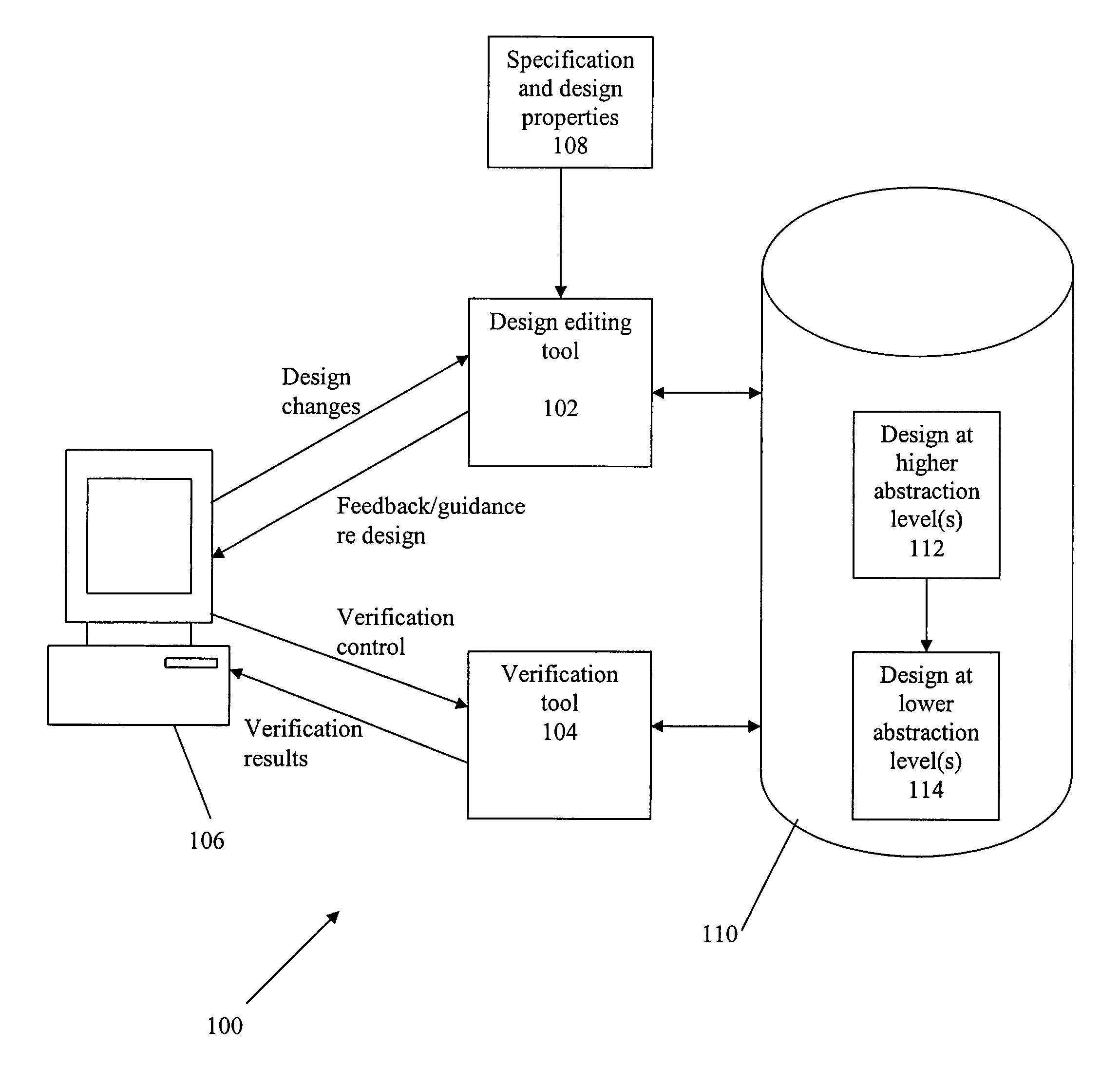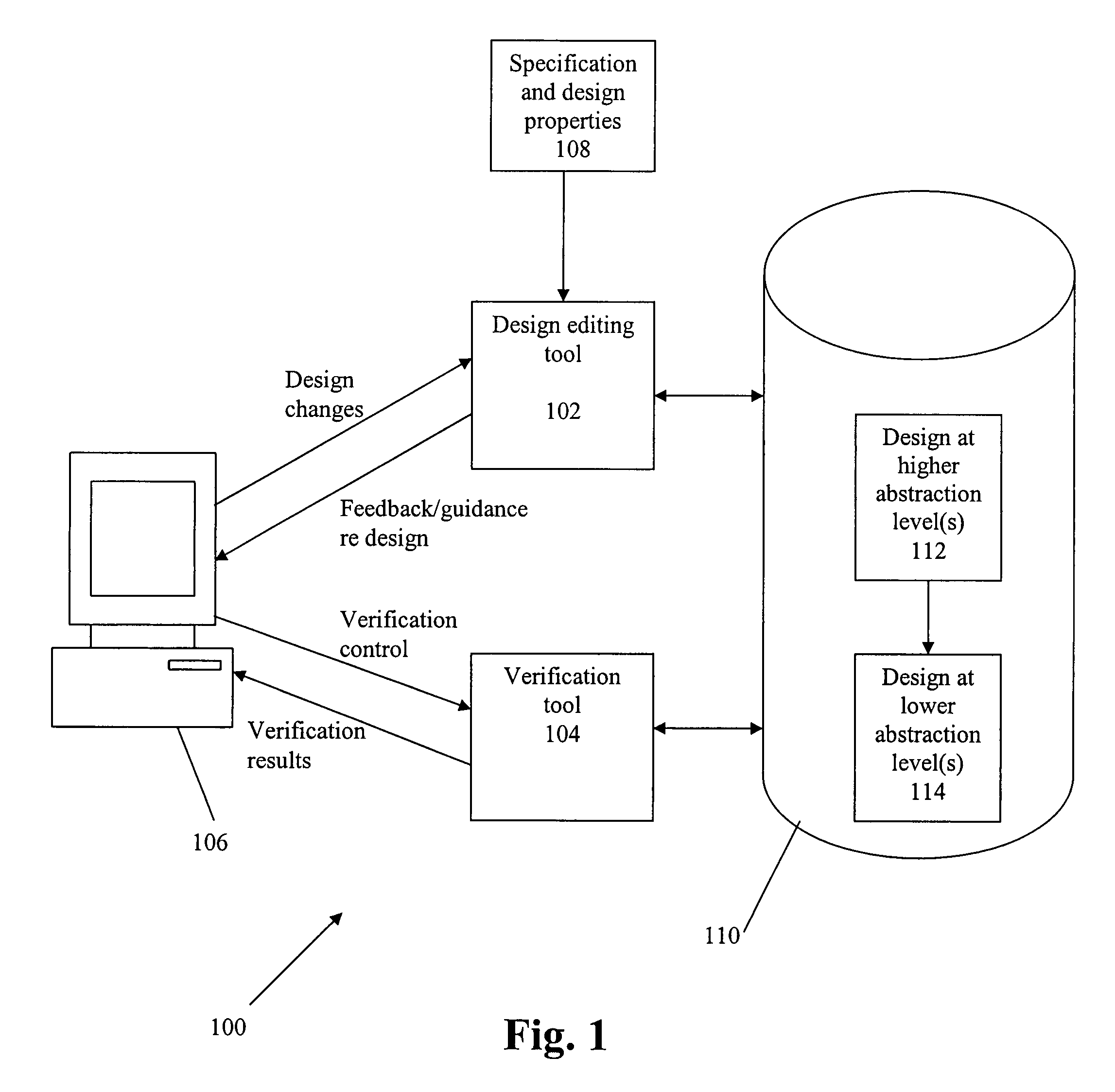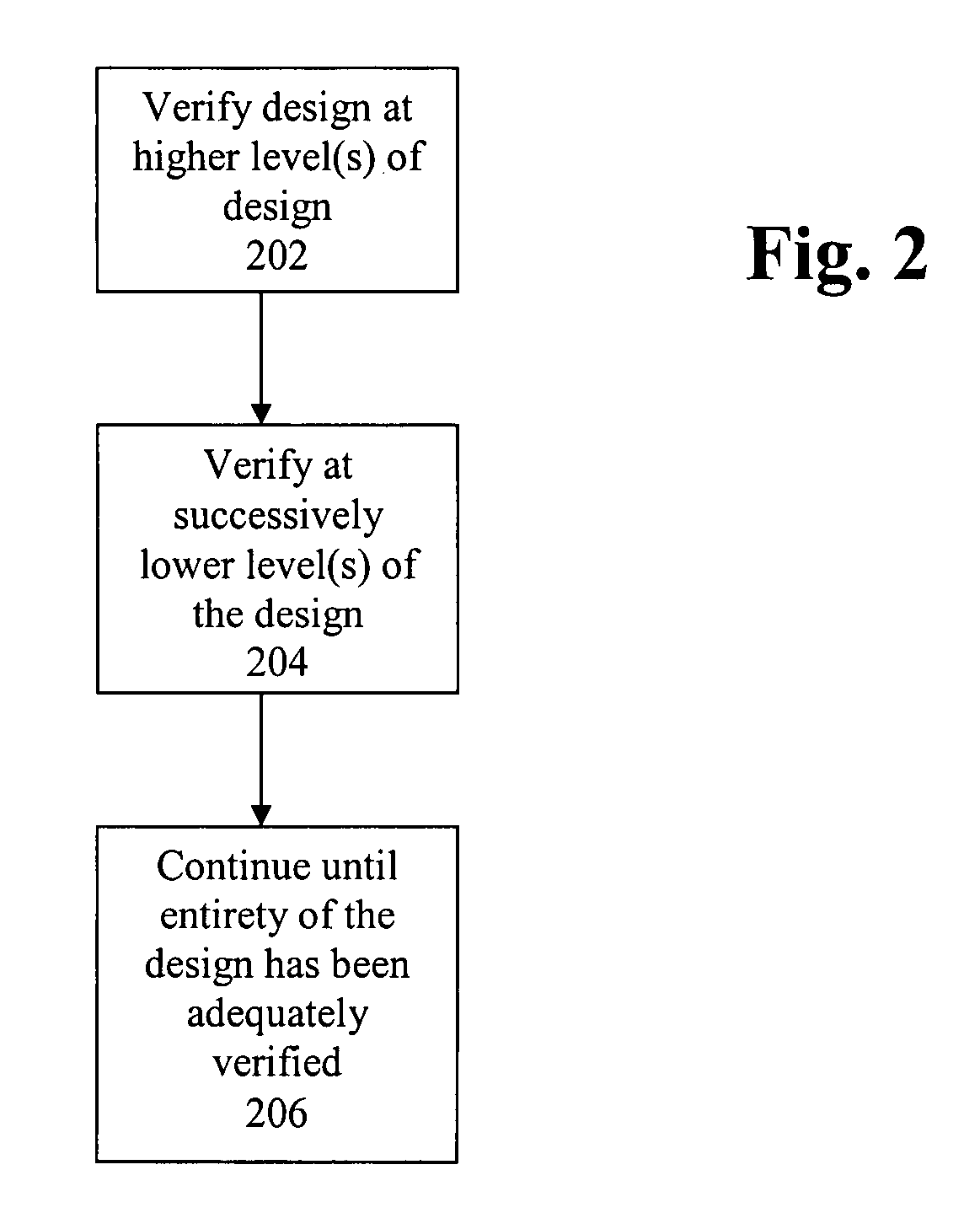Method and system for implementing top down design and verification of an electrical circuit design
a top-down design and circuit technology, applied in the field of top-down design and electrical circuit design verification, can solve the problems of inability of conventional verification tools inability to effectively and efficiently scale upwards to handle very large electronic designs, and inability to handle simulation or formal verification, so as to achieve effective and efficient scaling, increase complexity and the number of transistors, and increase functionality and feature sets
- Summary
- Abstract
- Description
- Claims
- Application Information
AI Technical Summary
Benefits of technology
Problems solved by technology
Method used
Image
Examples
Embodiment Construction
[0017]The present invention provides improved approaches for designing and verifying electronic designs. In some embodiments, design and verification are performed using stepwise refinement techniques, which can also include or be referred to as “top-down” design verification.
[0018]With the present stepwise refinement approach, the electronic design can be acted upon at different levels of abstraction, but with approximately the same level of resolution at each abstraction level. What this means is that the amount of data to be accessed and operated upon at each level of abstraction for the purpose of verification is approximately the same, but the level of detail is different. For example, consider a verification process that first checks an IC design at a high level of abstraction, then at a medium level of abstraction containing more design details, and then at a even lower level of abstraction with many more details. Each level of verification will be performed at approximately ...
PUM
 Login to View More
Login to View More Abstract
Description
Claims
Application Information
 Login to View More
Login to View More - R&D
- Intellectual Property
- Life Sciences
- Materials
- Tech Scout
- Unparalleled Data Quality
- Higher Quality Content
- 60% Fewer Hallucinations
Browse by: Latest US Patents, China's latest patents, Technical Efficacy Thesaurus, Application Domain, Technology Topic, Popular Technical Reports.
© 2025 PatSnap. All rights reserved.Legal|Privacy policy|Modern Slavery Act Transparency Statement|Sitemap|About US| Contact US: help@patsnap.com



